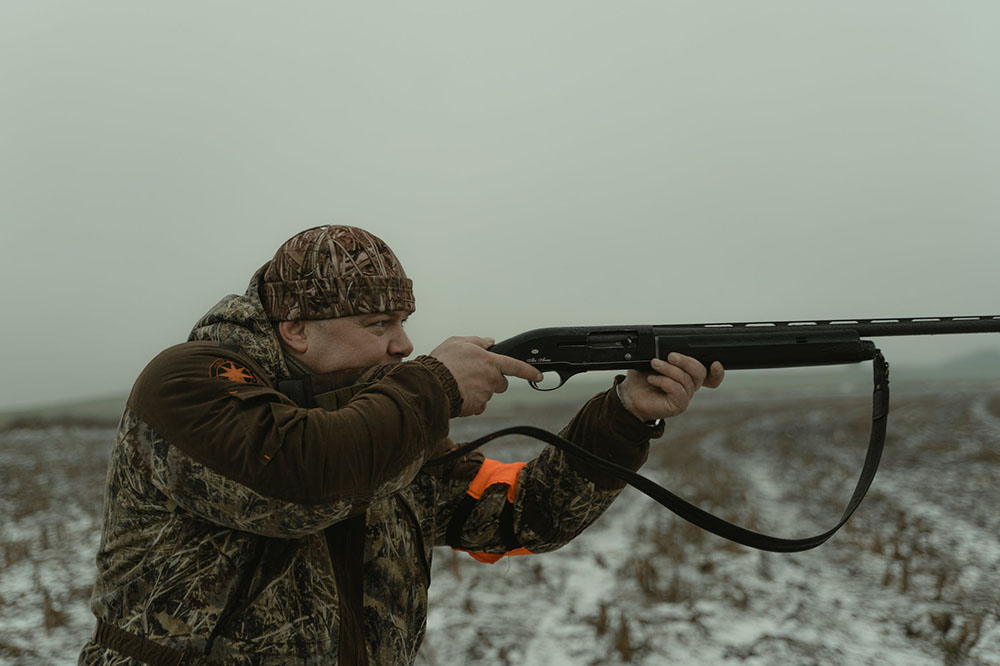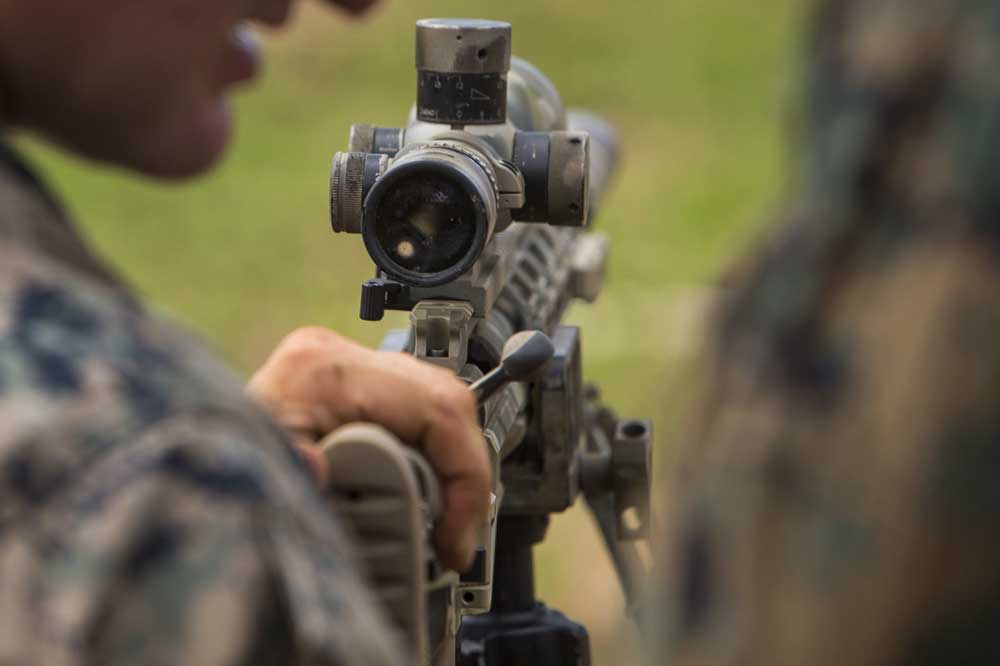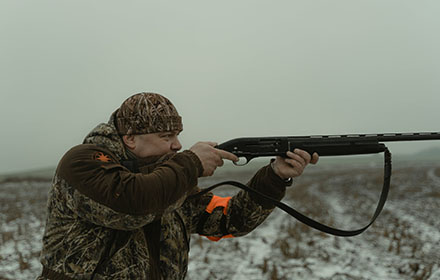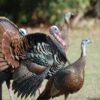When it comes to choosing the right and best scope for your rifle, there is a whole range of special features you might need to consider. And there are different options available for scopes on the market, so which one is the right for you? It depends on what type of game you are hunting, what your goals are, and the purpose of your rifle.
If you’re wondering what rifle scope you should buy, this article is for you! There’s a lot in this essay to help you with selecting the perfect rifle scope for your needs.
Why A Right Scope Is Important?
Precision shots at longer distances would be the most beneficial. A scope helps to shoot game animals at longer distances with more precision.
A scope can be handy if you are hunting games at longer distances like over 100 yards, and it can help identify the sex of the animal you see at a distance. For example, antlers are hard to see when they are far away, and you want to ensure you are aiming at the right one, so you need to know the scope that suits you best.
What Is Magnification?
The magnification refers to the magnification of the scope that augments that image by “X” times what the naked eye sees, and the lowest magnification range is 3X and the highest magnification is 9X.
When the magnification of the scope is set on 3X, what you see is magnified to 3X what you see with the naked eye when you look through the scope.
When the magnification of the scope is set to 9X, what you see is magnified to 9x what you see with the naked eye.
If the target is at 300 meters, the scope will show it at a distance of 100 meters, so you can see your game much better for identification and get a better shot.
How Much Magnification Do You Need?
The amount of magnification depends on your uses. Rifle scopes with higher magnification allow you to see further and in more detail but reduce your field of view. Rifle scopes with lower magnification make it difficult to determine where you are shooting.
So how much magnification do you need?
Between 1X and 4X: Suitable for target shooting up to 100 yards, stalking small game or home defense.
Between 5X and 8X: Suitable for target shooting up to 200 yards, or stalking big game, or hunting in enclosed landscapes such as mountains or forests.
Between 9X and 12X: Suitable for target shooting beyond 200 yards, or hunting in an open landscape, such as deserts or fields.
Fixed VS. Variable Power
Some rifle scopes only have one magnification setting(like 2×30), which means the magnification is fixed. While the variable power means rifle scopes have more than one magnification (like 3-9×40).
The advantage of a fixed scope is that you can aim and shoot more quickly. but you can only shoot from a specific range. Variable powered scopes provide versatility in a wide range of shooting situations.
Objective Lens
The objective lens is the lens located at the end of the scope, which allows more light into the optic, for a brighter image.
For example, the 3×32 refers to its objective lens being 32mm. 6–24×50 means there is a variable magnification range between 6 and 24 power, with an objective lens of 50mm. The larger the diameter of the lens is, the clearer and brighter the image will be.
However, a bigger objective lens means a heavier scope, a smaller scope ring, and tends to give away your position if you are hunting due to sunlight reflection. A larger objective lens usually costs more than scopes with smaller objective lenses.

How Much Objective Diameter Do You Need?
28mm & Under: Firearms with low recoil; close range hunting; low power scopes.
30-44mm: Firearms with more recoil; low light hunting; higher power scopes.
50mm & Up: Uses higher magnification in low light; extreme long-range targets.
Rifle Scope Lens Coatings
Lens coatings are thin layers of material applied to optical components, which alter the way light reflects and transmits between them.
They help reduce glare and reflection, making the image clearer and brighter. Additionally, lens coating also protects the front element of the lens from cleaning marks and minor scratches and allows the lens to last longer.
More coatings usually lead to better transmission of light. There are 4 basic lens coating types:
- Coated: A single coating layer on at least one lens surface.
- Fully-Coated: A single coating layer on all exterior glass surfaces.
- Multicoated: Multiple coating layers on at least one lens surface.
- Fully Multicoated: Multiple coating layers on all exterior glass surfaces.
Scope Reticles
The reticle is the central aiming point you see when you look through the rifle scope.
Here are the three main scope reticle types:
Duplex: A duplex reticle is the simplest and fastest crosshair pattern. Ideal for target shooting or hunting.
Mil-Dot: Help estimate your target’s distance. Great for law enforcement and the military.
BDC: BDC reticle estimates bullet drop, holdover, and more. Best for long-range shooters.
First vs Second Focal Plane
First Focal Plane scopes have reticle sizes that seem to change as you adjust magnification. The reticle increases and decreases in size as you zoom in and out. First focal plane is becoming increasingly common.
In Second Focal Plane scopes, the picture in the scope changes sizes as you zoom but the reticle remains the same size.
First Focal Plane rifle scopes are primarily used for long-range shooting, and Second Focal Plane scopes are primarily used when hunting. The first focal plane generally costs more money and it obscures your short-range view.
Parallax
Parallax is an optical illusion that happens when your scope’s reticle kind of bobs around with your head movement, and the image of the target and reticle are not precisely in the same plane.
Move your head from side to side or up and down while looking at the target. When the reticle appears to move, this indicates parallax. It is important to adjust parallax so that accuracy can be improved.
3 Ways Scopes Correct Parallax:
Side focus adjustment knobs (Third Turret): The focal lens is moved toward or away from the objective lens to correct parallax.
Factory-Set: Parallax adjustment is automatically built-in by the manufacturer.
Adjustable Objective (AO): The parallax is adjusted with a rotation of the ring on the objective lens. With adjustable objectives, the objective lens gets adjusted towards or away from the image.
Field of View
When you view a target through the scope of your rifle, what you can see from right to left is known as the field of view. The field of view of your rifle scope will gradually decrease as your magnification increases.

(MOA)Minute of Angle vs (MRAD)Milradian
Minute of angle(MOA) is a common unit of angular measurement, it basically measures 1” per 100 yards. Milliradian (MRAD) is another measurement of accuracy, it basically measures 36” per 100 yards.
At 100 yards, 1 MOA is 1 inch and 1 MRAD is 3.6 inches. MOA and MRAD are both angular measurements, and they are just different ways of measuring the same thing.
Windage and Elevation Turrets
Scope’s vertical and horizontal adjustments are controlled by windage and elevation knobs. As you look through the scope, you are going to notice that the windage knob is located on the right-hand side of the scope, which is where you adjust the reticle horizontally (left to right), and the elevation knob is located on top of the scope and adjusts your reticle vertically (up and down).
Both turrets must be adjusted in harmony to zero a rifle. If you’re shooting at a long distance, you may need to adjust these before you shoot.
Before you choose the best scope for your rifle, you need to make sure that turrets are reliable and have an audible “click” sound when adjusted, these are usually mentioned in the reviews.
Eye Relief
Eye relief is the distance between your eye and the ocular lens, and you should save your eye from pain with proper eye relief.
How Much Eye Relief Do You Need?
You’ll need more eye relief if the recoil is high. In a nutshell, at least 3.5 – 4 inches of eye relief.
How Much Should You Spend on A Scope?
High-quality scopes will last a lifetime and beyond, and a good scope can make an average rifle perform to its full potential. Invest in a good scope, and you won’t regret it.
Conclusion
Above is what you need to know about choosing the best scope for rifle, I believe you have figured out what kind of scope you need, and you’re definitely ready to choose the best rifle scope for your needs.




















Leave a reply